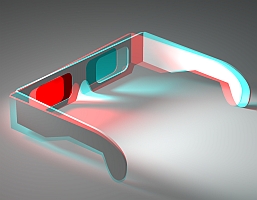 Researchers from California Institute of Technology (Caltech) in Pasadena have developed a new process for 3D optical imaging of live biological samples. The new approach that produces images of higher resolution, penetration depth — for seeing deep inside 3D samples — and imaging speed are described online in the journal Nature Methods (paid subscription required).
Researchers from California Institute of Technology (Caltech) in Pasadena have developed a new process for 3D optical imaging of live biological samples. The new approach that produces images of higher resolution, penetration depth — for seeing deep inside 3D samples — and imaging speed are described online in the journal Nature Methods (paid subscription required).
The team led by postdoc physicist Thai Truong of Caltech’s Biological Imaging Center use an imaging method called light-sheet microscopy, where a thin, flat sheet of light illuminates a biological sample from the side, creating a single illuminated optical section through the sample. The light given off by the sample is then captured with a camera oriented perpendicularly to the light sheet, harvesting data from the entire illuminated plane at once.
This data harvesting allows millions of image pixels to be captured simultaneously, reducing the light intensity usually needed for each pixel. Reducing the light intensity not only enables fast imaging speed but also decreases the light-induced damage to living samples, demonstrated with embryos of fruit flies and zebrafish.
Troung’s team achieved sharper image resolution with light-sheet microscopy deep inside the biological samples with a process for the illumination called two-photon excitation. This process is normally used to collect an image one pixel at a time by focusing the exciting light to a single small spot.
The Caltech team — includes two biologists, two physicists, and one electrical engineer — found a way to apply two-photon excitation in sheet-illumination mode. A patent is pending on the new process for side-illumination with a two-photon excitation.
An example of an application of the technology is 3D movies of the entire embryonic development of an organism, covering the entire embryo in space and time. These movies could capture the behavior of individual cells, as well as expression patterns of important genes, showing their activation in specific tissues at specific times during development.
An early video follows of the Caltech process in action, showing cell divisions and movements that of an entire fruit fly embryo.
Photo: Dominic Alves/Flickr
* * *

 RSS - Posts
RSS - Posts
[…] Read more: Caltech Develops High Rez, High Speed, High Depth 3D Imaging […]
[…] Read more: Caltech Develops High Rez, High Speed, High Depth 3D Imaging […]